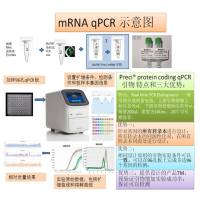Transmissible Spongiform Encephalopathy Neurobiology and Ultrastructure Suggests Extracellular PrPSc Conversion Consistent with Classical Amyloidosis
互联网
互联网
相关产品推荐

Recombinant-Saccharomyces-cerevisiae-Non-classical-export-protein-2NCE102Non-classical export protein 2
¥10318

Preci® mouse(小鼠) Prnp (基因ID:19122) qPCR引物对 (全名:prion protein;别名:PrP,PrPC,Sinc,CD230,PrPSc,Prn-i,Prn-p,PrP,prP27-30,prP33-35C)
¥139

///蛋白Recombinant Classical swine fever virus Genome polyprotein重组蛋白/蛋白
¥2616

Recombinant-Schizosaccharomyces-pombe-Non-classical-export-protein-2-homologfhn1Non-classical export protein 2 homolog
¥10402

N/A蛋白|典型猪热病毒N/A蛋白|典型猪热病毒N/A重组蛋白|Classical swine fever virus N/A Recombinant Protein
¥3168

